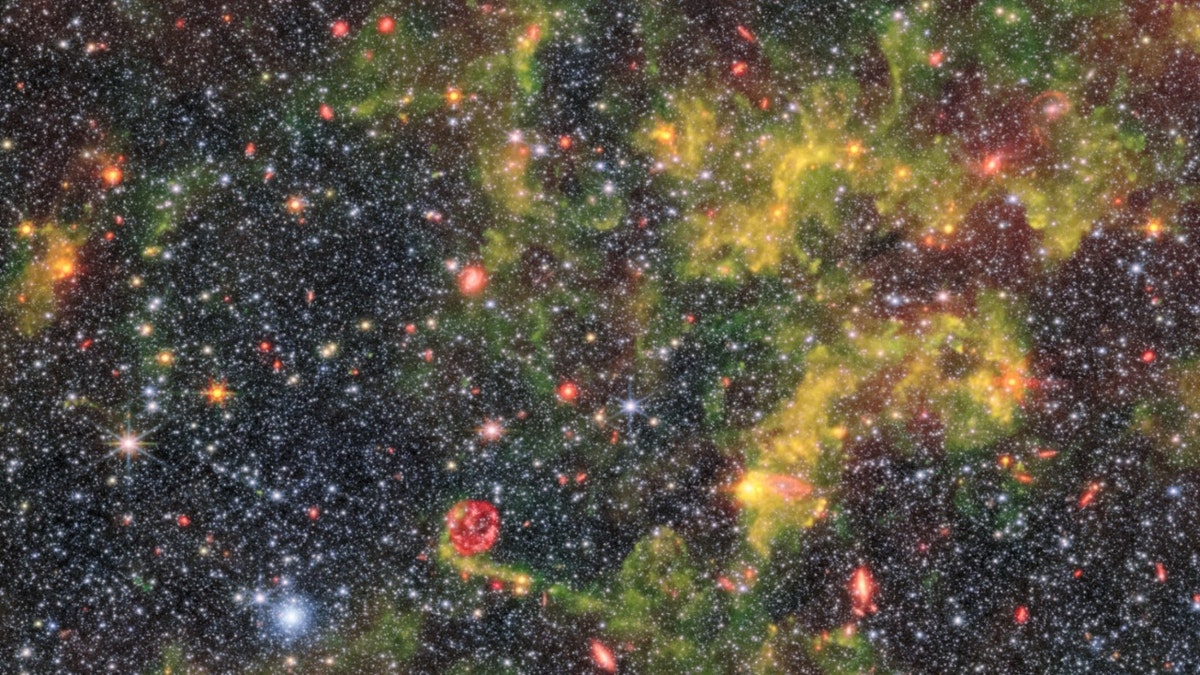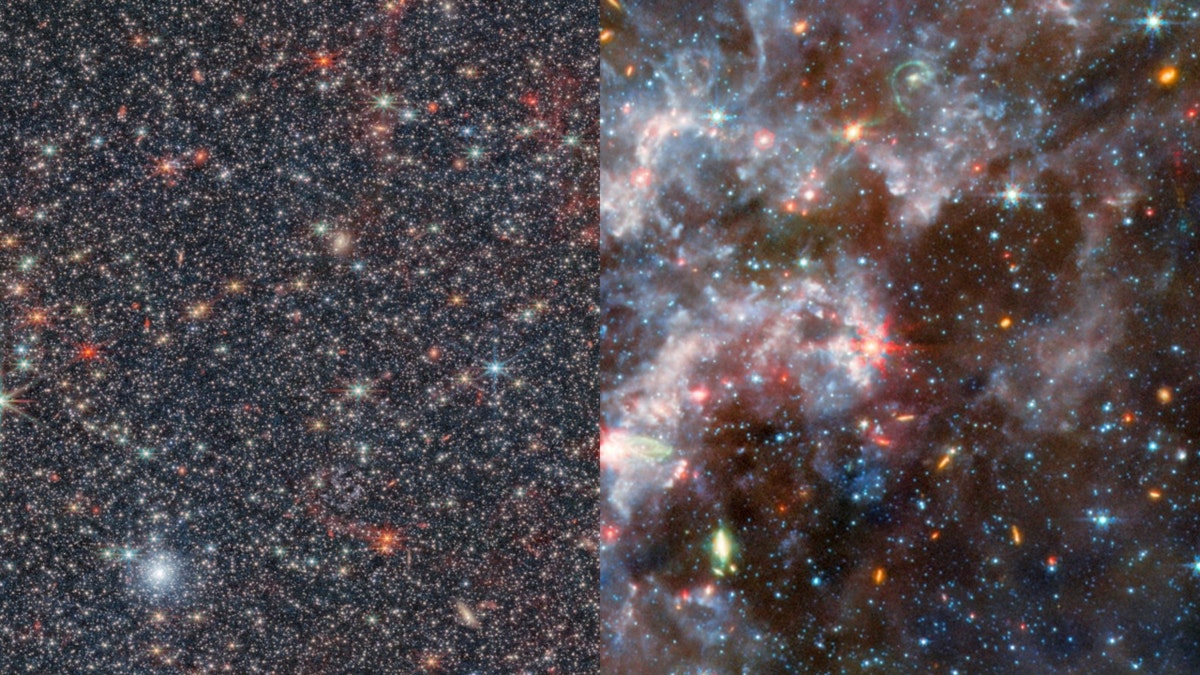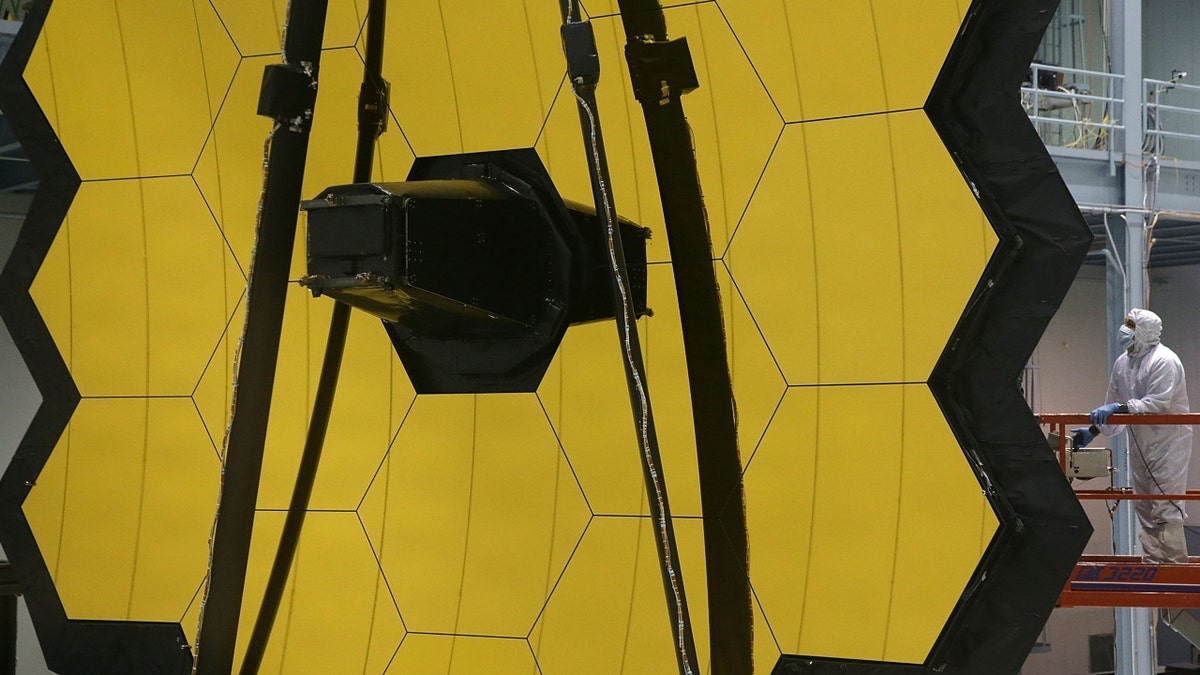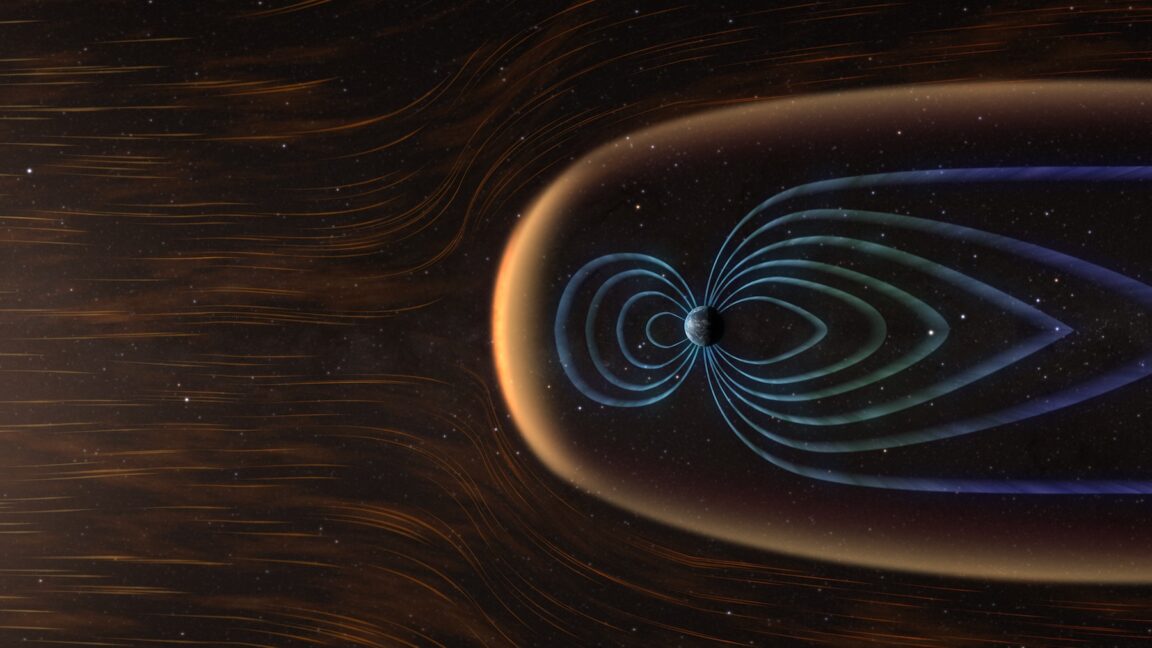Recently, the James Webb Space Telescope took new images of the irregular galaxy NGC 6822, providing evidence of its unusually low metallicity. According to NASA, this indicates that the galaxy lacks many elements heavier than hydrogen and helium. The Webb team explains that studying a contemporaneous object with low metallicity, like NGC 6822, can provide insights into the early universe’s stars and dust.
The Near-InfraRed Camera (NIRCam) captured one image, while the Mid-InfraRed Instrument (MIRI) took another. The views of the galaxy were combined in a third image.
NIRCam has the ability to see through dust and gas, allowing it to reveal numerous dazzling stars. On the other hand, MIRI focuses on the galactic dust.
The NIRCam image shows bright stars in pale blue and cyan, representing the instrument’s ability to detect the shortest wavelengths of light. Among these stars is a prominent globular cluster with many stars, visible as a bright blue orb to the left of the red glass.
In the MIRI image, blue gas indicates light emitted by organic compounds called polycyclic aromatic hydrocarbons, which play a crucial role in star and planet formation. Additionally, cyan represents cooler patches of dust, while warmer dust appears more orange. Distant galaxies beyond NGC 6822 are also depicted in orange.
Closer galaxies are displayed in green, with MIRI highlighting light-emitting dust. Active areas of star formation within the galaxy are shown in bright red and magenta. The image also captures a supernova remnant, visible as a red ring just below the center.

This image displays the irregular galaxy NGC 6822 captured by the Near-InfraRed Camera (NIRCam) and Mid-InfraRed Instrument (MIRI) of the NASA/ESA/CSA James Webb Space Telescope.
(Credit: ESA/Webb, NASA & CSA, M. Meixner)

Scaled images taken by the James Webb Space Telescope’s Near-InfraRed Camera (left) and Mid-InfraRed Instrument (right) of the irregular galaxy NGC 6822
(Credit: ESA/Webb, NASA & CSA, M. Meixner)

GREENBELT, MD – NOVEMBER 2: A technician stands next to the James Webb Space Telescope during assembly November 2, 2016, at NASA’s Goddard Space Flight Center in Greenbelt, Maryland.
((Photo by Alex Wong/Getty Images))
The Webb Space Telescope’s recent images shed light on the metallicity of the distant galaxy NGC 6822. The low metallicity of this galactic neighbor indicates a scarcity of elements heavier than hydrogen and helium. This is reminiscent of the time before the first generation of stars when heavier elements were yet to be created. Studying NGC 6822 and its low metallicity can provide valuable insights into the early universe’s stars and dust.
NIRCam and MIRI, two instruments on the Webb Space Telescope, contributed to capturing the images. NIRCam allows us to see through dust and gas, revealing numerous captivating stars. On the other hand, MIRI focuses on galactic dust, providing complementary information. These images contribute to a better understanding of the galaxy NGC 6822 and highlight various stellar phenomena within it.
The MIRI image displays blue gas emitted by polycyclic aromatic hydrocarbons, essential in the formation of stars and planets. It also indicates cooler patches of dust in cyan and warmer dust in orange. Additionally, distant galaxies beyond NGC 6822 can be observed in orange. Meanwhile, closer galaxies are depicted in green, with MIRI emphasizing light-emitting dust. Areas of active star formation within the galaxy are showcased in bright red and magenta. The image also captures a red ring, a supernova remnant, just below the center of NGC 6822.
Julia Musto is a reporter for Fox News and Fox Business Digital.













